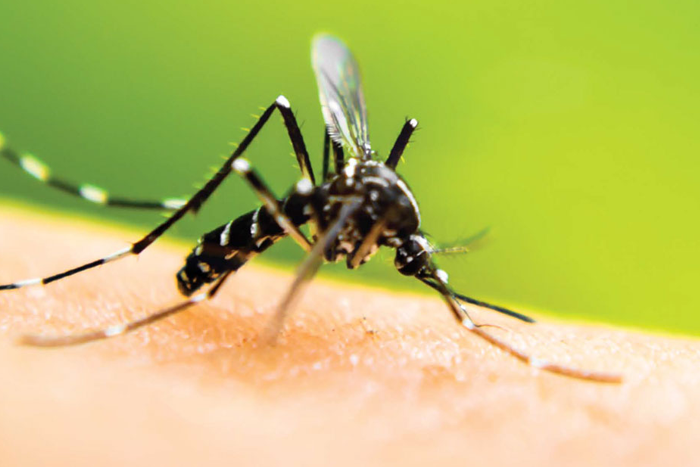


The mosquitoes are a family of small, midge-like flies: the Culicidae. Although a few species are harmless or even useful to humanity, most are a nuisance because they consume blood from living vertebrates, including humans. The females of many species of mosquitoes are blood-eating pests. In feeding on blood, some of them transmit extremely harmful human and livestock diseases, such as malaria, yellow fever, and filariasis. Some authorities argue accordingly that mosquitoes are the most dangerous animals on Earth.
The mosquito goes through four separate and distinct stages of its life cycle and they are as follows: Egg, Larva, pupa, and adult. Each of these stages can be easily recognized by their special appearance. There are four common groups of mosquitoes living in the Bay Area. They are Aedes, Anopheles, Culex, and Culiseta.

Culex mosquitoes lay their eggs on the surface of the fresh or stagnant water. The water may be in cans, barrels, horse troughs, ornamental ponds, swimming pools, puddles, creeks, ditches, or marshy areas. Mosquitoes prefer water sheltered from the wind by grass and weeds.
Culex mosquitoes usually lay their eggs at night. A mosquito may lay a raft of eggs every third night during its lifespan. Culex mosquitoes lay their eggs one at a time, sticking them together to form a raft of from 200- 300 eggs. A raft of eggs looks like a speck of soot floating on the water and is about 1/4 inch long and 1/8 inch wide. Tiny mosquito larvae emerge from the eggs within 24 hours.
Notes: Anopheles mosquitoes lay their eggs singly on the water, not in rafts. Aedes mosquitoes lay their eggs singly on damp soil. Aedes eggs hatch only when flooded with water (salt water high tides, irrigated pastures, tree holes, flooded stream bottoms, etc.).

Mosquito larvae, commonly called "wigglers" or "wrigglers", must live in water from 7 to 14 days depending on water temperature.
Larvae must come to the surface at frequent intervals to obtain oxygen through a breathing tube called a siphon. The larva eats algae and small organisms which live in the water. During growth, the larva molts (sheds its skin) four times. The stages between molts are called instars. At the 4th instar, the larva reaches a length of almost 1/2 inch. When the 4th instar larva molts it becomes a pupa.
Note: Anopheles are unlike Culex and Aedes larvae since they do not have a breathing tube, they must lie parallel to the water surface in order to get a supply of oxygen through a breathing opening.

Mosquito pupae, commonly called "tumblers", must live in water from 1 to 4 days, depending upon species and temperature. The pupa is lighter than water and therefore floats at the surface. It takes oxygen through two breathing tubes called "trumpets". When it is disturbed it dives in a jerking, tumbling motion and then floats back to the surface. The pupa does not eat. The metamorphosis of the mosquito into an adult is completed within the pupa case. The adult mosquito splits the pupa case and emerges to the surface of the water where it rests until its body can dry and harden.

Only female mosquitoes bite animals and drink blood. Male mosquitoes do not bite but feed on the nectar of flowers. Aedes mosquitoes are painful and persistent biters, attacking during daylight hours (not at night). They do not enter dwellings, and they prefer to bite mammals like humans. Aedes mosquitoes are strong fliers and are known to fly many miles from their breeding sources.







